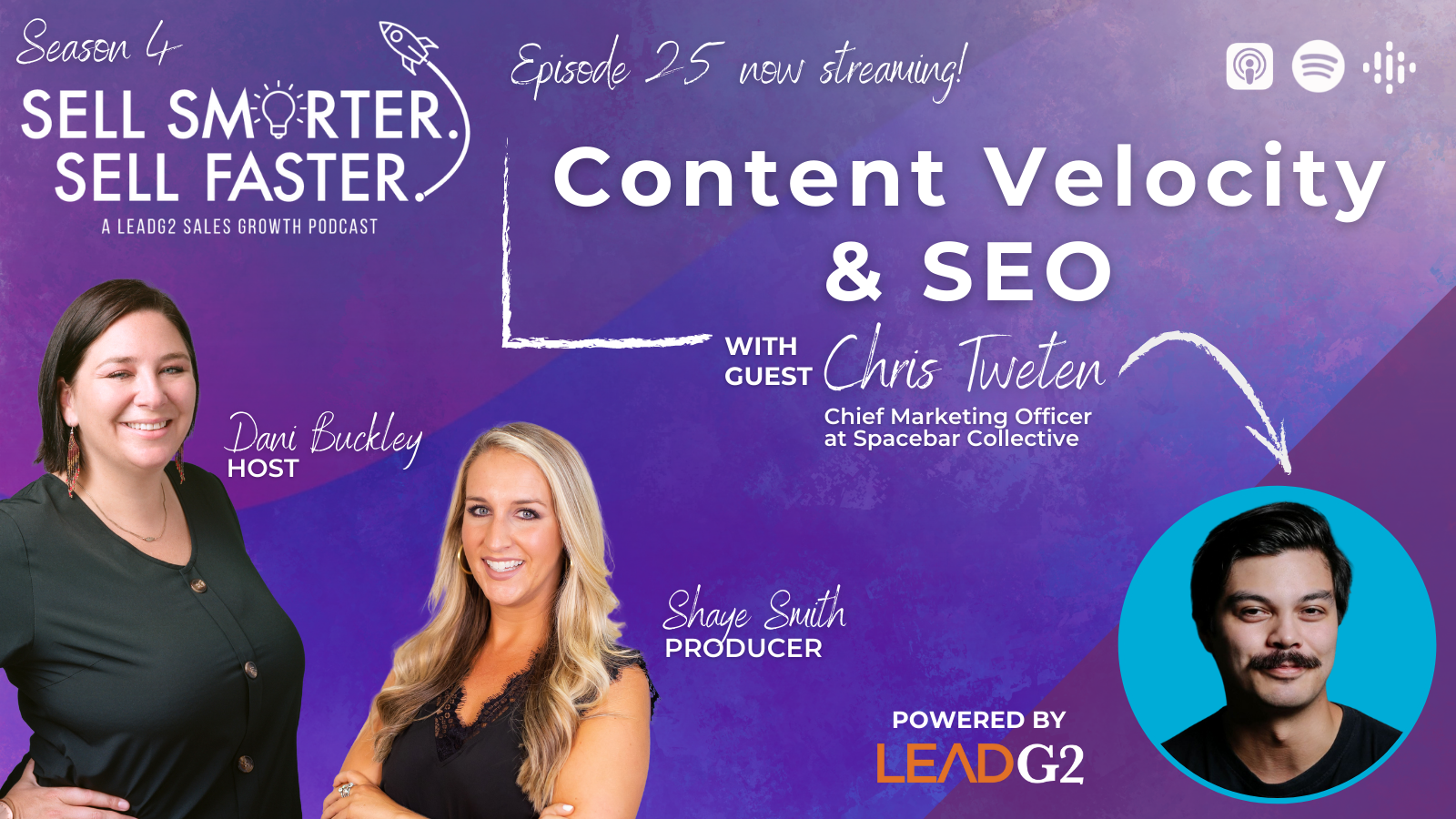Content Velocity and SEO with Chris Tweten
Developing a solid content strategy is one thing; implementing it is another. How can you ensure that you’re producing enough content to be relevant...


According to recent studies by HubSpot and others, 57% of sales and marketing professionals agree that high-quality content has a positive impact on driving sales. It seems that no one understands the impact content can have on a sales process more than salespeople. This is evident in the fact that 31% of a salesperson’s time is spent searching for or actually creating content that can be used to support their sales process. (Source).
Salespeople engage with prospects as they move through the various stages of the buyer’s journey – Awareness, Consideration, and Decision. Rarely is this a smooth process. There are usually multiple obstacles, disruptions, and objections along the way. The salesperson’s primary role is to remove as much friction in this process as possible. Their objective is to keep the buyer’s journey moving, guide them to the next best step, avoid obstacles that can delay the process, and build momentum to finalize the decisions and close the sale.
Accelerating this journey requires educating and informing your prospect. Quality content adds credibility as it educates and informs at these various stages, and it can be an invaluable resource. Content supports what the salesperson is saying, and it helps the prospect process information in new and different ways.
Helping the prospect identify their business challenge that needs addressing.
Helping the prospect understand the impact their challenge has on their business goals.
Helping the prospect sort through the myriad of potential solutions to their problem.
Helping the prospect understand the value of your solution.
Helping the prospect visualize your partnership in solving their problem.
Not all content is created for every situation. It’s important to map various content resources to the various stages of the buyer’s journey. This will help the sales team leverage the best resources for the various sales scenarios they face. It will save them time as it keeps the prospect moving in their decision-making process.
Following is an outline of how and when various content can be deployed at different points in the buyer’s journey.
At this stage, your prospect is in the process of identifying a business problem or challenge. The emphasis at this stage isn’t selling but educating. By answering frequently asked questions and addressing common scenarios, you can build awareness as you position your business as a trusted resource and subject matter expert.
Examples of content that can be effective at this stage include:
eBooks
Blog articles
Worksheets
Infographics
Webinars
Newsletters
Short videos
At this stage of the buyer's journey, your prospect understands their business problem and is ready to explore potential solutions. The emphasis at this stage is persuasion. Your prospects need to be persuaded that your qualifications can be trusted and you have the ability to solve their problems. Being informative and not salesy should remain the focus.
Examples of content that can be effective at this stage include:
Brief (but information-dense) eBooks and whitepapers
Trend reports
DIY Guides
Case Studies
Templates and Took Kits
Lists of Valuable Third-Party Resources
Detailed Webinars or Podcasts
Your prospect has identified their problem. They understand the impact the problem has on their business. And they’ve explored multiple solutions to address their problem. Now, they’re ready to decide on which direction they will go.
The emphasis at this stage is two-fold. You want to confirm in your prospect’s mind that they are making the right decision to partner with your firm. And secondly, you want to motivate action. You don’t want the prospect to become paralyzed and avoid taking the last step needed to complete their buyer’s journey. Consequently, your content needs to focus on proving your company’s value by being positive and irrefutable.
Examples of content that can be effective at this stage include:
Customer Stories
Testimonials
Service Feature/Benefit One-Sheets
ROI Models
Competitive Comparisons
Marketing teams can support the sales process and actually boost sales growth by arming the sales team with the content required to support the buyer’s journey.

Developing a solid content strategy is one thing; implementing it is another. How can you ensure that you’re producing enough content to be relevant...

If you are reading this blog post, you probably have some content that is not performing as well as you would like it to and is not driving ROI....
.png)
The business goal to grow and thrive both personally and professionally relies on pushing forward with what you’d like to achieve. As you continue...